Related Research Articles
MEDLINE is a bibliographic database of life sciences and biomedical information. It includes bibliographic information for articles from academic journals covering medicine, nursing, pharmacy, dentistry, veterinary medicine, and health care. MEDLINE also covers much of the literature in biology and biochemistry, as well as fields such as molecular evolution.

Michael Ellis DeBakey was an American general and cardiovascular surgeon, scientist and medical educator who became Chairman of the Department of Surgery, President, and Chancellor of Baylor College of Medicine at the Texas Medical Center in Houston, Texas. His career spanned nearly eight decades.

The Tulane University School of Medicine is the medical school of Tulane University, a private research university in New Orleans, Louisiana. The school is located in the Medical District of the New Orleans Central Business District.

Daniel Nathans was an American microbiologist. He shared the 1978 Nobel Prize in Physiology or Medicine for the discovery of restriction enzymes and their application in restriction mapping.
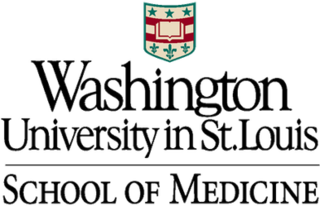
Washington University School of Medicine (WUSM) is the medical school of Washington University in St. Louis, and located in the Central West End neighborhood of St. Louis, Missouri. Founded in 1891, the School of Medicine shares a campus with Barnes-Jewish Hospital, St. Louis Children's Hospital, and the Alvin J. Siteman Cancer Center. It has consistently ranked among the top medical schools in the United States in terms of the number and amount of research grants/funding awarded by the National Institutes of Health, in addition to other measures.

Harvey James Alter is an American medical researcher, virologist, physician and Nobel Prize laureate, who is best known for his work that led to the discovery of the hepatitis C virus. Alter is the former chief of the infectious disease section and the associate director for research of the Department of Transfusion Medicine at the Warren Grant Magnuson Clinical Center in the National Institutes of Health (NIH) in Bethesda, Maryland. In the mid-1970s, Alter and his research team demonstrated that most post-transfusion hepatitis cases were not due to hepatitis A or hepatitis B viruses. Working independently, Alter and Edward Tabor, a scientist at the U.S. Food and Drug Administration, proved through transmission studies in chimpanzees that a new form of hepatitis, initially called "non-A, non-B hepatitis" caused the infections, and that the causative agent was probably a virus. This work eventually led to the discovery of the hepatitis C virus in 1988, for which he shared the Nobel Prize in Physiology or Medicine in 2020 along with Michael Houghton and Charles M. Rice.
Professor John Grange died 10 October 2016 was an English immunologist, epidemiologist, researcher, and academic, and was one of Europe's leading tuberculosis specialists.
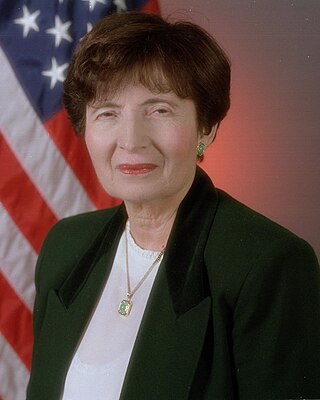
Faye Glenn Abdellah was an American pioneer in nursing research. Abdellah was the first nurse and woman to serve as the Deputy Surgeon General of the United States. Preceding her appointment, she served in active duty during the Korean War, where she earned a distinguished ranking equivalent to a Navy Rear Admiral, making her the highest-ranked woman and nurse in the Federal Nursing Services at the time. In addition to these achievements, Abdellah led the formation of the National Institute of Nursing Research at the NIH, and was the founder and first dean of the Graduate School of Nursing at the Uniformed Services University of the Health Sciences (USUHS). A few of Abdellah's more passionate interests in public health included the importance of long-term care planning for elderly patients; the need to strengthen nursing school infrastructure; and the necessity of patient-centered approaches in nursing. In 2000, Abdellah was inducted into the National Women's Hall of Fame. During her acceptance speech, Abdellah made the following quote: "We cannot wait for the world to change. .. Those of us with intelligence, purpose, and vision must take the lead and change the world. .. I promise never to rest until my work has been completed!”
Index Medicus (IM) is a curated subset of MEDLINE, which is a bibliographic database of life science and biomedical science information, principally scientific journal articles. From 1879 to 2004, Index Medicus was a comprehensive bibliographic index of such articles in the form of a print index or its onscreen equivalent. Medical history experts have said of Index Medicus that it is “America's greatest contribution to medical knowledge.”
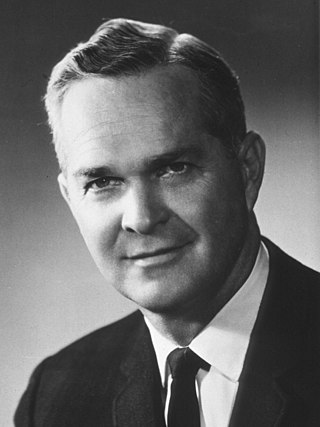
Robert Quarles Marston was an American physician, research scientist, governmental appointee and university administrator. Marston was a native of Virginia, and, after earning his bachelor's, medical and research degrees, he became a research scientist and medical professor. He served as the dean of the University of Mississippi School of Medicine, the director of the National Institutes of Health, and the president of the University of Florida.

Sarah Elizabeth Stewart was a Mexican-American researcher who pioneered the field of viral oncology research, and the first to show that cancer-causing viruses can spread from animal to animal. She and Bernice Eddy co-discovered the first polyoma virus, and SE (Stewart-Eddy) polyoma virus is named after them.
The Howard University College of Medicine (HUCM) is an academic division of Howard University that grants the Doctor of Medicine (M.D.), Ph.D., M.S., and the M.PH. HUCM is located at the Howard University Health Sciences Center in Washington, D.C., and it was founded in 1868 in response to the growing population of the city.

Frank Bradway Rogers was a medical doctor and librarian who was instrumental in changing the Army Medical Library into the National Library of Medicine. He helped develop an electronic system of storing and retrieving information called Medical Literature Analysis and Retrieval System (MEDLARS) which replaced the old index cataloging system. American Libraries included Rogers on the list of "100 of the most important people in 20th-century librarianship."
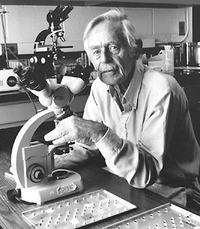
Ernst J. Eichwald (1913–2007) was a pathologist known for his pioneering work in tissue transplantation and research on genetic factors that influence the rejection of organ transplantation. Eichwald, while studying cancer in the 1940s, described the male-specific antigen and helped establish the foundations of transplantation immunology. He organized the first International Transplantation Conference, sponsored by the National Institutes of Health (NIH), in Harriman, N.Y., in 1953; founded and edited the journal, Transplantation Bulletin and its successor, Transplantation, for more than 30 years; and chaired the Transplantation Committee of the National Academy of Sciences from 1955 to 1967. His research played an important role in the development of successful protocols for organ transplantation in humans.
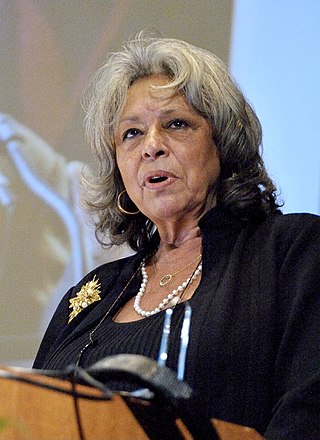
Vivian Winona Pinn is an American physician-scientist and pathologist known for her advocacy of women's health issues and concerns, particularly for ensuring that federally funded medical studies include female patients, and well as encouraging women to follow medical and scientific careers. She served as associate director for research on women's health at the National Institutes of Health (NIH), concurrently was the inaugural director of NIH's Office of Research on Women's Health. Pinn previously taught at Harvard University, Tufts University, and Howard University College of Medicine. Since retiring from NIH in 2011, Pinn has continued working as a senior scientist emerita at the Fogarty International Center.
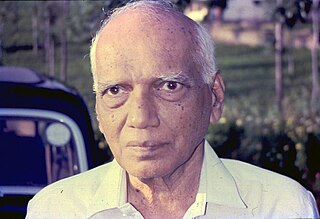
Natteri Veeraraghavan (1913-2004) was an Indian physician, microbiologist and medical researcher, known for his contributions to the understanding of diseases like rabies, tuberculosis and leprosy. He was a former director of the Pasteur Institute of India, Coonoor and the chairman of the World Health Organization International Reference Center on Rabies. He was honoured by the Government of India in 1967, with the award of Padma Shri, the fourth highest Indian civilian award for his contributions to the society.
Robert Cruickshank CBE FRSE FRCP FRCPE was a Scottish bacteriologist. He did much early work on cancer research and aerobiology, including the airborne spread of streptococcus. He was an expert in the field of epidemiology.
Marc E. Rothenberg is an American physician-scientist who has made significant contributions to the fields of allergy, gastroenterology, and immunology. He is currently a Professor of Pediatrics, at Cincinnati Children's Hospital Medical Center, and the University of Cincinnati College of Medicine, the Director of the Division of Allergy and Immunology, the Director of the Cincinnati Center for Eosinophilic Disorders, and the principal investigator of the Consortium of Eosinophilic Disease Researchers (CEGIR) as part of the Rare Disease Clinical Research Network of the National Institute of Health. Rothenberg's research is focused on eosinophilic gastrointestinal diseases.
Edward Allen Adelberg (1920–2009) was a founder of microbial genetics and biochemist who spent much of his career at Yale University. He was a member of the National Academy of Sciences and co-author of influential textbooks.
Stuart Mudd was an American physician and professor of microbiology. In 1945 he was the president of the American Society for Microbiology.
References
- ↑ Cummings, Martin M.; Mehnert, Robert B. (1982-06-01). "MEDLARS Services of the National Library of Medicine". Annals of Internal Medicine. 96 (6_Part_1): 772–774. doi:10.7326/0003-4819-96-6-772. ISSN 0003-4819. PMID 7046544.
- ↑ Now, Circulating (2016-03-30). "MEDLARS II: MEDLINE & Instantaneous Search". Circulating Now from NLM. Retrieved 2020-06-14.
- ↑ Now, Circulating (2015-10-22). "The Medical Library Assistance Act of 1965". Circulating Now from NLM. Retrieved 2020-06-14.
- ↑ "NNLM | Network of the National Library of Medicine". nnlm.gov. Retrieved 2020-06-14.
- ↑ Cummings, Martin M.; Johnson, Frank B.; Fox, Cecil H. (1984-11-23). "John Shaw Billings". Science. 226 (4677): 912. Bibcode:1984Sci...226..912C. doi:10.1126/science.226.4677.912-b. ISSN 0036-8075. PMID 6390678. S2CID 13318032.
- ↑ "Miles Conrad Award and Lectures | NISO website".
- "In His Own Words: Brief Biography". www.nlm.nih.gov. Retrieved 4 November 2020.
 This article incorporates text from this source, which is in the public domain .
This article incorporates text from this source, which is in the public domain .
Further reading
- Agencies, United States Congress Senate Committee on Appropriations Subcommittee on Departments of Labor, Health and Human Services, Education, and Related (1981). Departments of Labor, Health and Human Services, Education, and Related Agencies, Appropriations for Fiscal Year 1982: Hearings Before a Subcommittee of the Committee on Appropriations, United States Senate, Ninety-seventh Congress, First Session. U.S. Government Printing Office.
{{cite book}}: CS1 maint: multiple names: authors list (link) - Operations, United States Congress Senate Committee on Government (1964). Hearings, Reports and Prints of the Senate Committee on Government Operations. U.S. Government Printing Office.
- "Cummings, Martin Marc, 1920- | The Online Books Page". onlinebooks.library.upenn.edu. Retrieved 2020-06-15.
- Oppenheimer, Ella H. (1953-09-01). "Diagnostic and Experimental Methods in Tuberculosis. Henry Stuart Willis, Martin Marc Cummings". The Quarterly Review of Biology. 28 (3): 324–325. doi:10.1086/399830. ISSN 0033-5770.